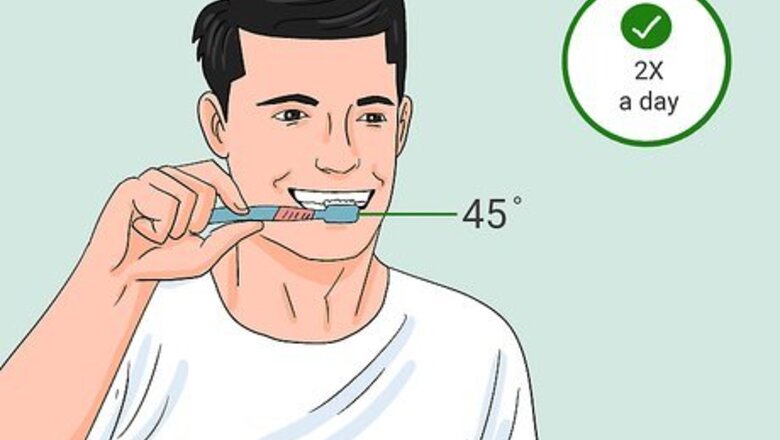
views
X
Trustworthy Source
University of Rochester Medical Center
Leading academic medical center in the U.S. focused on clinical care and research
Go to source
Luckily, there’s still hope! Keeping your teeth clean and avoiding foods that could cause stains are natural steps you could take to whiten your teeth. If you want better results, then your dentist can recommend some whitening products that are right for you.
Practicing Good Oral Hygiene
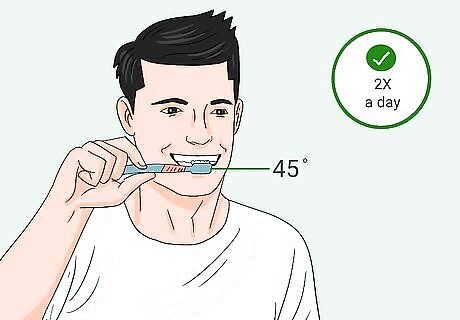
Brush your teeth twice a day. Brushing your teeth is one of the most important ways to maintain your oral health and keep your teeth white. Brush twice a day for 2 minutes to remove plaque and stains. Hold your toothbrush at a 45-degree angle from your gums and use gentle, back and forth strokes to clean your teeth properly. Remember to get all the surfaces of your teeth, including the backs and sides. These parts might not be visible, but plaque can hide here and cause cavities. A soft-bristled toothbrush is best.
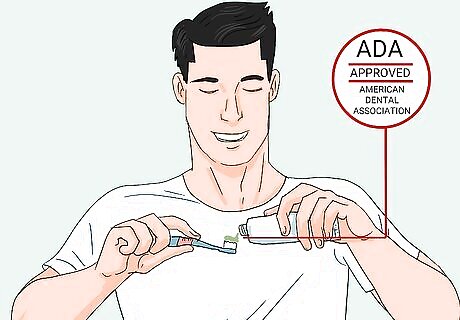
Use an ADA-approved whitening toothpaste. There are several whitening toothpastes on the market, but not all of them are approved by the American Dental Association. When you’re shopping for a good whitening toothpaste, look for the ADA seal of approval. This means the product is evaluated and proven to be effective. Whitening toothpastes might take 2-6 weeks to noticeably whiten your teeth, so be patient and use it every time you brush. Whitening toothpastes still might not whiten your teeth dramatically, so talk to your dentist if you want better results.
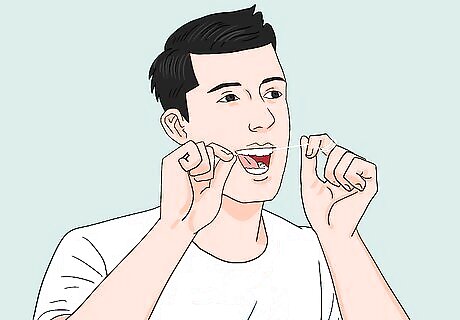
Clean in between your teeth once a day. Food and plaque also hide in between your teeth, so don’t miss these spots. Clean between your teeth once a day to prevent cavities and infections. Use floss or a water pick to reach these spots after brushing. If you have trouble using floss, an approved dental pick could also work. Don’t use any unusual items like straws or toothpicks to clean between your teeth. These aren’t as effective as flossing, and you could injure your gums or teeth.

Replace your toothbrush every 3-4 months for the best performance. Older toothbrushes don’t clean your mouth as well, so replace yours regularly. In general, get a new toothbrush every 3-4 months to keep your teeth as clean as possible. Also keep and eye on the toothbrush bristles. If they start fraying before 3 months go by, then replace the toothbrush sooner.
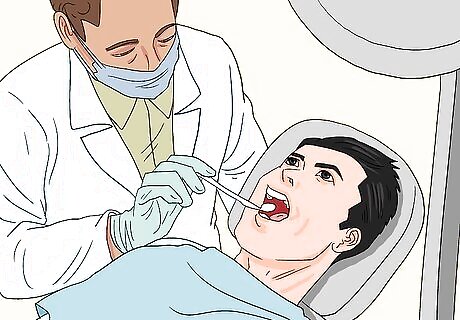
Visit your dentist for regular checkups. Even if you do a great job cleaning your teeth, some plaque could still build up. This is why seeing your dentist for regular checkups and cleanings is important. In general, see your dentist once or twice a year, and don’t hesitate to schedule a visit if you think there are any problems with your teeth.
Preventing Stains

Limit the dark-colored foods and drinks in your diet. Lots of colored food and drinks can stain your teeth and make them darker. Some of the major culprits are coffee, dark teas, red wine, and soda. Try to limit these items in your diet. While you can have these items occasionally, definitely avoid them for a few hours after any kind of whitening treatment. These foods and drinks could reverse the whitening treatment because your teeth’s saliva layer hasn’t built back up yet.

Avoid acidic foods after a whitening treatment. Citrus fruits like oranges, strawberries, or lemons can reverse tooth-whitening procedures. If you’re using any products to whiten your teeth, then definitely avoid these foods after a treatment. The amount of time you have to wait varies depending on the product, so always check the instructions.
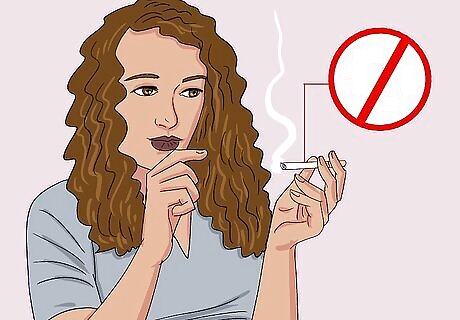
Quit smoking or don’t start at all. Cigarettes and other tobacco products can stain your teeth, so it’s best to avoid them altogether. Either quit as soon as possible, or avoid starting in the first place. Besides staining your teeth, smoking increases your risk for gum disease, tooth loss, and oral cancer, among many other health issues. It’s best for your overall health to avoid smoking altogether.
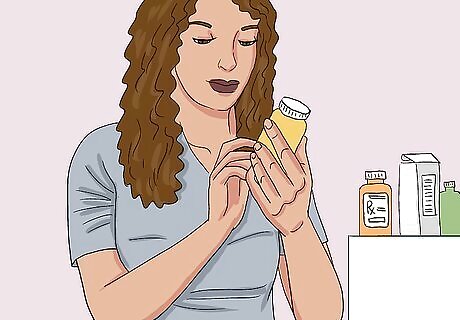
Review your medications to check if tooth-darkening is a side effect. In some cases, tooth-darkening is a side effect from medications. Particularly, antihistamines, antipsychotics, and some high blood pressure medications could darken your teeth. Review the medications that you take with your doctor and ask if darkening is a side effect for any of them. Ask if you can switch to other medications if the ones you take could be darkening your teeth. Some procedures like chemotherapy and radiation treatments can also darken teeth. If you take certain antibiotics while you’re pregnant, they could stain your child’s teeth later in life.
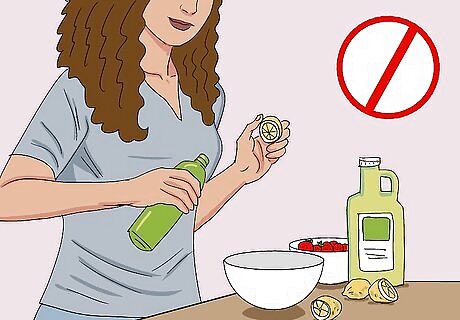
Don’t use any unverified home remedies for whitening. You’ll probably come across tons of home whitening remedies online. Some of these include using peroxide, lemons, strawberries, turmeric, or oil pulling to remove stains. None of these remedies are proven to work, and some might even make stains on your teeth worse. It’s best to stick with good oral hygiene practices, and visit your dentist for professional whitening if you want it.
Professional Teeth-Whitening
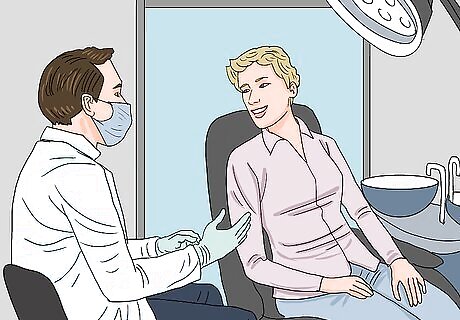
Visit your dentist before trying any tooth-whitening products. This is important to make sure you don’t have any underlying tooth issues that could be staining your teeth, like cavities or tooth decay. After ruling any of this out, your dentist can recommend the right products or treatments to whiten your teeth.

Use ADA-approved whitening strips. This is a common and easy at-home whitening treatment. These products use peroxide or similar chemicals to bleach stains off your teeth. Even better, you don’t need a prescription to buy them, and you can get them from most pharmacies. Just look for the ADA seal of approval so you know you’re buying a quality product. Always follow the instructions for any whitening strips you use. Usually, you stick the strips on your teeth and leave them there for 10-15 minutes before peeling them off. If you don’t know which type of whitening strips are best, ask your dentist for a recommendation.
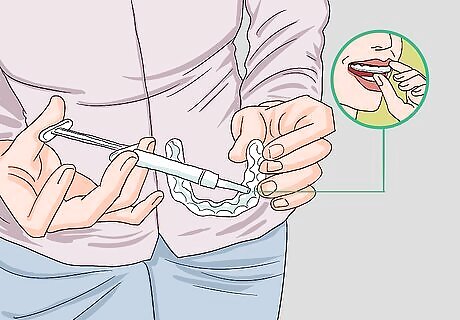
Get prescription whitening gel from your dentist. If whitening strips don’t work, your dentist might prescribe a stronger gel. Usually, you’ll paint the gel onto your teeth and leave it on for a few hours. Follow all of your dentist’s instructions to use the gel correctly. Remember to avoid any dark or acidic foods and drinks for a few hours after a whitening treatment. These could reverse the effects.
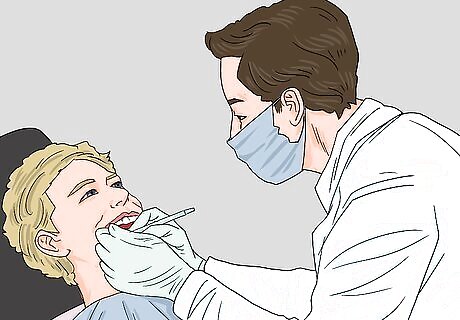
Try in-office whitening treatments for stronger results. In-office whitening treatments may work best for bleaching your teeth. Usually, the dentist will paint a peroxide gel onto your teeth, then expose them to a bright light to speed the whitening process. If nothing else has worked for you, your dentist may recommend a procedure like this. Whitening treatments like this could increase your risk for tooth sensitivity, so be prepared for that. Always confirm the costs for an in-office procedure, because they can be expensive.




















Comments
0 comment